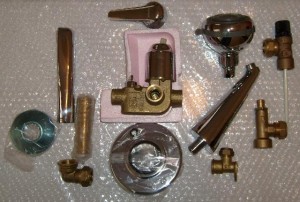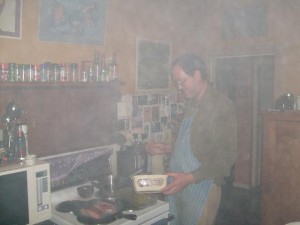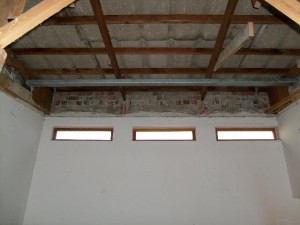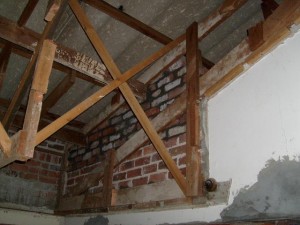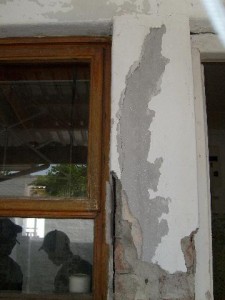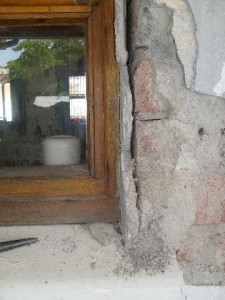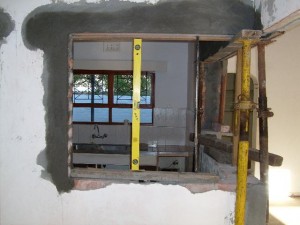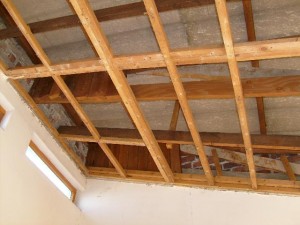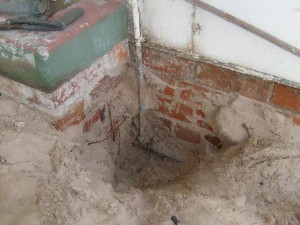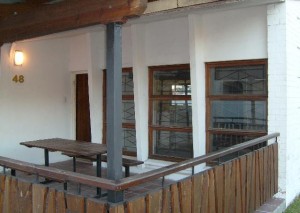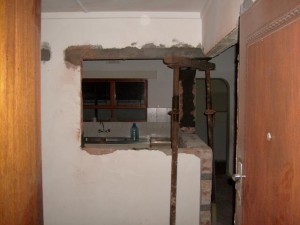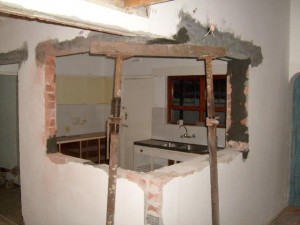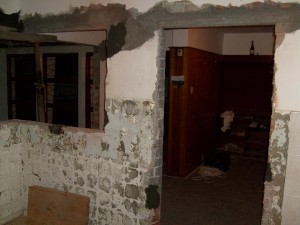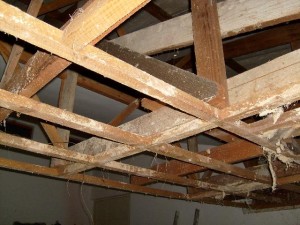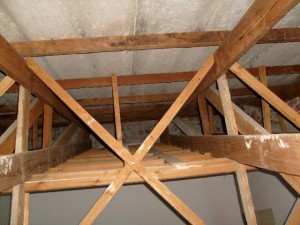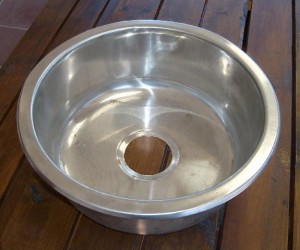How much light does one need in, for example, a kitchen? The answer is “lots” but if you’re the main contractor that doesn’t help much :-)
I found http://www.lightingplans.com/lightPlansDesign102.html which tells me that a kitchen needs 1 to 1.5 watts of CFL per square foot, which translates to about ten times that per square meter. (work-in-progress warning) The kitchen is 10.5 square meters total, of which around 6 meters is floor space. Call it 90 – 150 watts total. Looks like four to six downlights loaded with 13 watt CFL bulbs for task illumination, coupled with a central light for general illuminiation, will do. Along with that I’ll use some kind of undercounter lights, probably LED technology from LEDzShine. There’s no sense having a gas stove but still having to cook by candle light when Eskom does it’s inevitable thing — I’m planning to run the 12V lights off a battery charged by the mains, sort of a lighting UPS.
On the living room side of things, we have no idea what we want to do. I installed four light points in the ceiling, dividing the length and the width roughly into thirds. It’ll have to do.
We also bought (see “We’re Not There Yet” on Tanya’s blog :-) two chandeliers for the kids — a purple glassy thing for Tamsyn and a black gothy thing for Jessica. R599 and R699 from Mr Price Home.
Tanya saw this one at Builder’s Warehouse. For “our” bathroom. Expensive… but nice.

